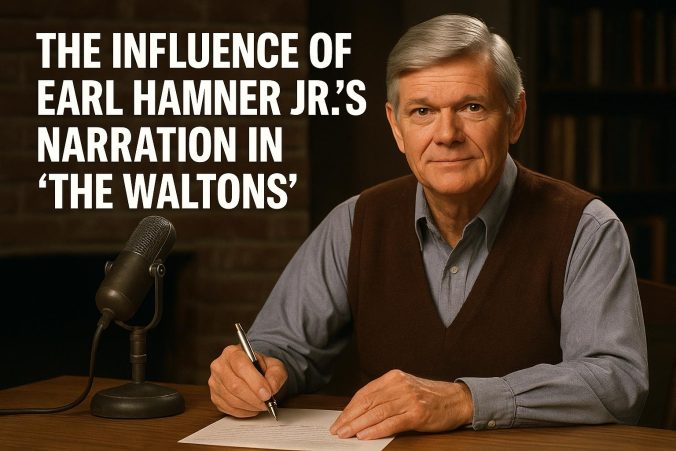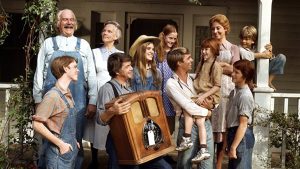The Role of Earl Hamner Jr.’s Narration in The Waltons
The television series The Waltons, which aired from 1972 to 1981, remains an iconic portrayal of life during the Great Depression and World War II from the perspective of a large family in rural Virginia. One of the defining elements of the series is the narration provided by Earl Hamner Jr., the creator of the show. His voice functions as a bridge between the past and the present, offering insights and reflections that add depth to each episode.
Earl Hamner Jr.: The Storyteller
Earl Hamner Jr., whose life experiences heavily influenced the series, narrates The Waltons as the voice of John-Boy Walton, the character based on Hamner himself. This autobiographical touch lends authenticity and a personal dimension to the stories. Hamner’s narration is not merely a device for exposition but enriches the viewing experience through its tone and delivery.
Born as the oldest of eight siblings in a family affected by the economic hardships of the time, Hamner’s early life in Virginia provided a fertile ground for storytelling. His experiences and reflections on family and community life are deeply etched into the narrative fabric of The Waltons. This personal history enabled him to craft stories that resonated with many people who had experienced similar trials and triumphs.
Hamner’s career began in media with writing scripts and teleplays before he went on to craft novels that would later inspire the series. His storytelling was shaped by his upbringing, allowing him to portray the nuances of rural American life during significant historical moments. His work on The Waltons can thus be seen as a continuation of his efforts to capture the spirit of his time, showcasing his deep understanding of the characters and the world they inhabit.
Enhancing the Narrative Arc
The narrative voice in The Waltons contributes significantly to the show’s storytelling. Hamner’s voice provides context and continuity, guiding viewers through complex emotional landscapes and connecting the dots between episodes. The reflective nature of the narration encourages audiences to ponder the challenges and triumphs faced by the Walton family, effectively weaving the episodic stories into a coherent whole.
Each episode of The Waltons tackles different storytelling elements, from individual character growth to overarching family struggles. Hamner’s narration often frames these stories, setting the scene at the beginning and offering closure at the episode’s end. This structure allows the audience to follow not only the plot but also the thematic evolution of the series, giving it a layered and complex narrative arc. The consistency provided by the narration reinforces the continuity of the Walton family saga, making every episode a chapter in a larger work.
Creating a Sense of Nostalgia
His calm and measured delivery, coupled with the wisdom conveyed, evokes a sense of nostalgia and timelessness. Hamner’s narration often frames episodes, opening and concluding with thoughtful observations that resonate with viewers. This narrative style invites the audience to reflect on universal themes such as family, community, and resilience.
Listeners are transported back to a time when life’s simpler pleasures were cherished, and community bonds were integral to survival. Hamner’s deliberate pacing and gentle tone serve to evoke memories and emotions from the viewers’ own experiences, encouraging them to ponder how these themes are relevant in their current lives. This connection to the past, through the lens of the Walton family’s experiences, provides a comforting and reflective viewing experience.
Personal Connection to Characters
The narrator’s voice also plays a crucial role in establishing a personal connection between the audience and the Walton family. By offering insights into the characters’ thoughts and emotions, the narration deepens the viewers’ understanding and empathy for their struggles and joys. Hamner’s unique perspective as the creator lends an additional layer of meaning to the storytelling, blurring the line between fiction and reality.
Through his narration, Hamner often reveals the inner workings of characters who might otherwise seem inscrutable. His ability to articulate the nuanced emotions of characters such as John-Boy, Olivia, and the grandparents brings them closer to the audience, allowing the viewers to see them as real people with genuine feelings. This insight is crucial in developing a deep empathetic connection, inviting audiences to invest emotionally in the characters’ journeys.
The Walton family represents a diversity of experiences, influenced by their generational differences, personal aspirations, and the challenges posed by their environment. Hamner’s narration lends each character a voice and a perspective that is unique yet intertwined with the family narrative. This portrayal ensures that audiences see the characters as multifaceted individuals, thus enhancing the storytelling experience.
Enduring Impact
The impact of Earl Hamner Jr.’s narration on The Waltons cannot be overstated. It not only enhances the show’s narrative richness but also preserves its legacy as a heartfelt portrayal of American life during challenging times. For more information about The Waltons and Earl Hamner Jr.’s career, you can explore related resources like Earl Hamner’s official website.
Hamner’s work has not only left an indelible mark on television history but also paved the way for future storytellers in exploring personal and historical narratives. His approach to storytelling in The Waltons has contributed to the genre by demonstrating the power of authentic, nuanced narrative voices. The enduring success of the show is a testament to Hamner’s genius in using narration as a tool to engage viewers on a personal and collective level.
The show’s legacy extends beyond its original run. It continues to resonate with new generations who find value in its depiction of themes that are timeless and universal. The Waltons, like its narrator, presents a piece of history that reminds viewers of the timeless importance of family, courage, and resilience in the face of adversity.
In conclusion, the narration by Earl Hamner Jr. in The Waltons serves as an essential component that binds the story, connecting past and present while fostering a sense of nostalgia and personal connection among its viewers. Through his thoughtful reflections and storytelling prowess, Hamner has created a series that stands as a significant cultural artifact, continuing to impact audiences long after its time on air. His role as a narrator is not merely an addition to the series but its backbone, providing depth and coherence to each storyline.


